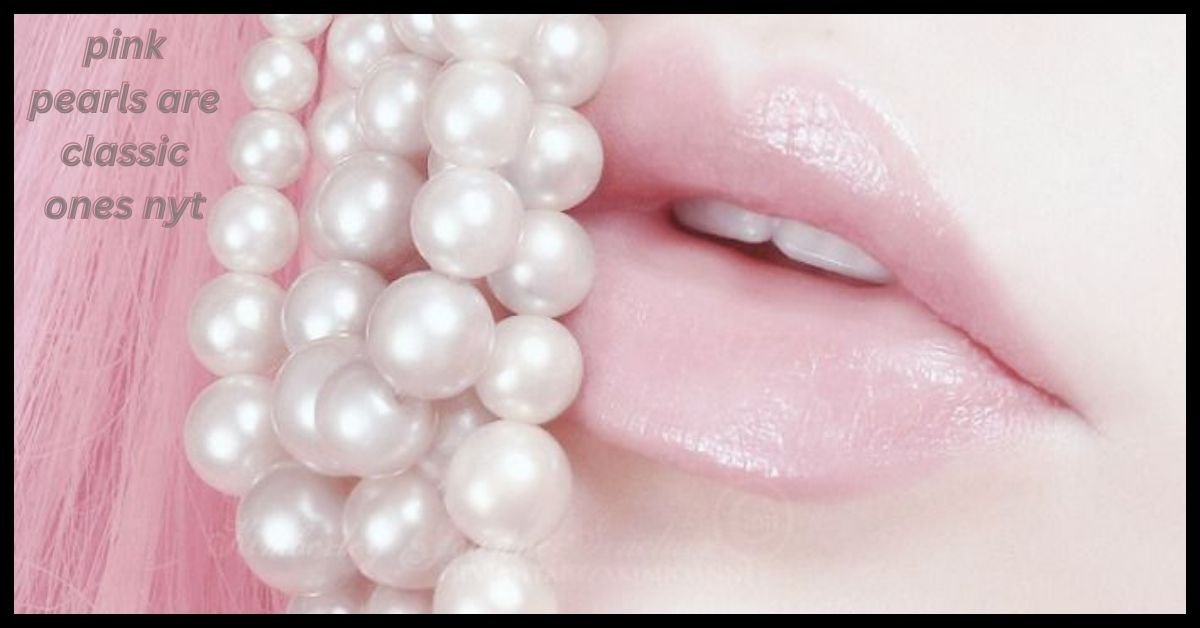Pink pearls are classic ones nyt, renowned for their delicate beauty and elegance, have captivated the world for centuries. Their unique charm transcends trends, securing their place as a perennial favorite in fine jewelry. This article explores the timeless appeal of pink pearls, tracing their historical significance, enduring popularity, and role in modern jewelry design.
A Glimpse into History: The Legacy of Pink Pearls
Ancient Reverence
Pink pearls have been revered in various cultures throughout history. Ancient civilizations such as the Greeks and Romans valued pearls for their rarity and beauty, associating them with wealth and purity. The allure of pearls continued through the Middle Ages when they were often used in religious artifacts and royal regalia. By the 18th century, pink pearls gained prominence in European courts, symbolizing sophistication and grace.
Cultural Significance
In many cultures, pink pearls are more than just decorative items; they symbolize love, compassion, and femininity. Their gentle pink hue evokes a sense of nurturing and emotional balance. The soft coloration of pink pearls makes them a favored choice for romantic occasions and meaningful gifts, reinforcing their status as a timeless symbol of affection and elegance.
The Unchanging Allure of Pink Pearls
Distinctive Color and Luster
One of the defining features of pink pearls is their captivating color. The range of shades available allows for personalization and expression, from soft pastel pinks to vibrant rose tones. The luster of pink pearls—characterized by a reflective, almost otherworldly sheen—adds depth and sophistication to any jewelry piece. This unique combination of color and luster ensures that pink pearls stand out in fine jewelry.
Versatility in Jewelry Design
Pink pearls are renowned for their versatility, making them suitable for various jewelry designs. Whether used in classic pearl necklaces, elegant drop earrings, or intricate bracelets, pink pearls add a touch of timeless beauty. Their ability to complement gold and silver settings allows them to adapt to various styles and occasions. This adaptability ensures that pink pearls remain a staple in traditional and contemporary jewelry collections.
Durability and Longevity
Although pearls are organic gemstones and require careful handling, they are remarkably durable when properly maintained. Unlike many other gemstones, pink pearls are not as hard and can be susceptible to scratching or damage from harsh chemicals. However, with proper care—such as regular cleaning and careful storage—pink pearls can retain their beauty for generations, making them a cherished addition to any jewelry collection.
Selecting and Caring for Pink Pearls
Key Quality Indicators
When choosing pink pearls, several factors contribute to their overall quality:
- Luster: A high-quality pearl exhibits a deep, reflective sheen. The brighter and more iridescent the luster, the higher the pearl’s value.
- Surface Quality: Look for pearls with minimal blemishes or imperfections. Smooth, unblemished surfaces are indicative of high-quality pearls.
- Shape: Pink pearls come in various shapes, from perfectly round to more irregular forms. The shape of the pearl often influences its value and suitability for different jewelry designs.
- Size: Pearls range from small and delicate to large and bold. Larger pearls are generally more valuable, but smaller pearls can offer a subtle elegance.
- Color: Choose a shade of pink that complements your skin tone and personal style. The richness and evenness of the color also play a role in the pearl’s quality.
Care and Maintenance
To ensure the longevity of your pink pearls, follow these care tips:
- Storage: Store pearls in a soft cloth pouch or a lined jewelry box to prevent scratches and damage. Avoid keeping pearls with other jewelry items that could cause abrasion.
- Cleaning: Gently wipe pearls with a soft, damp cloth after wearing them to remove any oils or dirt. Avoid using harsh chemicals, abrasive cleaners, or ultrasonic cleaners, as these can damage the delicate surface of the pearls.
- Wearing: Wear pearls after applying makeup and perfume to avoid exposure to potentially harmful chemicals. Pearls are best worn in a manner that minimizes contact with abrasive materials.
Frequently Asked Questions (FAQs)
Are Pink Pearls Natural or Cultured?
Pink pearls can be either natural or cultured. Natural pink pearls form without human intervention and are rare, while cultured pink pearls are farmed and more readily available. Both types can offer exceptional beauty and value.
How Can I Assess the Quality of Pink Pearls?
Quality assessment involves evaluating several factors: luster, surface quality, shape, size, and color. High-quality pink pearls will exhibit a deep, reflective luster and have minimal surface imperfections.
Can Pink Pearls Be Worn Every Day?
Pink pearls can be worn daily, but they require special care. Avoid exposing them to harsh chemicals, and store them properly to maintain their beauty. Regular cleaning and careful handling will help preserve their luster and elegance.
What Jewelry Designs Feature Pink Pearls?
Pink pearls are featured in various jewelry designs, including classic necklaces, elegant drop earrings, sophisticated bracelets, and statement rings. To enhance their beauty, they can be combined with other gemstones or set in various metal types.
Conclusion
Pink pearls embody a timeless elegance that transcends fashion trends. Their rich history, captivating color, and versatility make them a classic choice for any jewelry collection. Whether chosen for their symbolic meaning or aesthetic appeal, pink pearls continue to enchant and inspire, affirming their place as a cherished element in fine jewelry.
